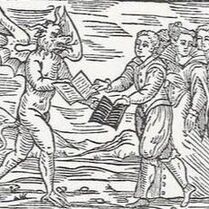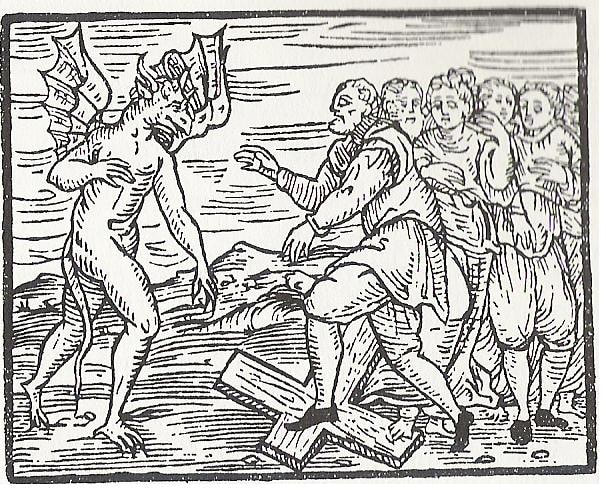Further Reading
Lara Apps and Andrew Gow, Male Witches in Early Modern Europe, Manchester University Press, (2003). Lyndal Roper, Oedipus and the Devil: Witchcraft, Sexuality, and Religion in Early Modern Europe, Routledge (1994, 1995, 1997, 2003). Witchcraft and Masculinities in Early Modern Europe, ed. Alison Rowlands, Palgrave Macmillan, (2009). The Malleus Maleficarum of Heinrich Kramer and James Sprenger, Full text of Rev. Montague Summers 1928 publication. (Also includes a blog and a Malleus Shop) Images Pact with the devil. Francesco Maria Guazzo, Compendium maleficarum (Milan, 1608). Male witch stepping on a cross. Francesco Maria Guazzo, Compendium maleficarum (Milan, 1608). Music: "Evening Melodrama" by Kevin Macleod (www.incompetech.com)
2 Comments
It's interesting to know that there are male witches appearing before whenever someone is accused of practicing witchcraft before. I wonder if witchcraft classes would be helpful these days and how people would feel about them as well. It is a fascinating topic that I want to read more about if given a chance.
Reply
Raymond
10/28/2023 06:12:35 pm
Interesting follow up to a previous talk on male witches.
Reply
Leave a Reply. |
Site Map |
© 2013-2024 Footnoting History. All rights reserved.
Footnoting History and the Footnoting History logo
are trademarks of Footnoting History, NY. Footnoting History operates under a SAG-AFTRA Micro-Monetized Podcast Agreement. |



